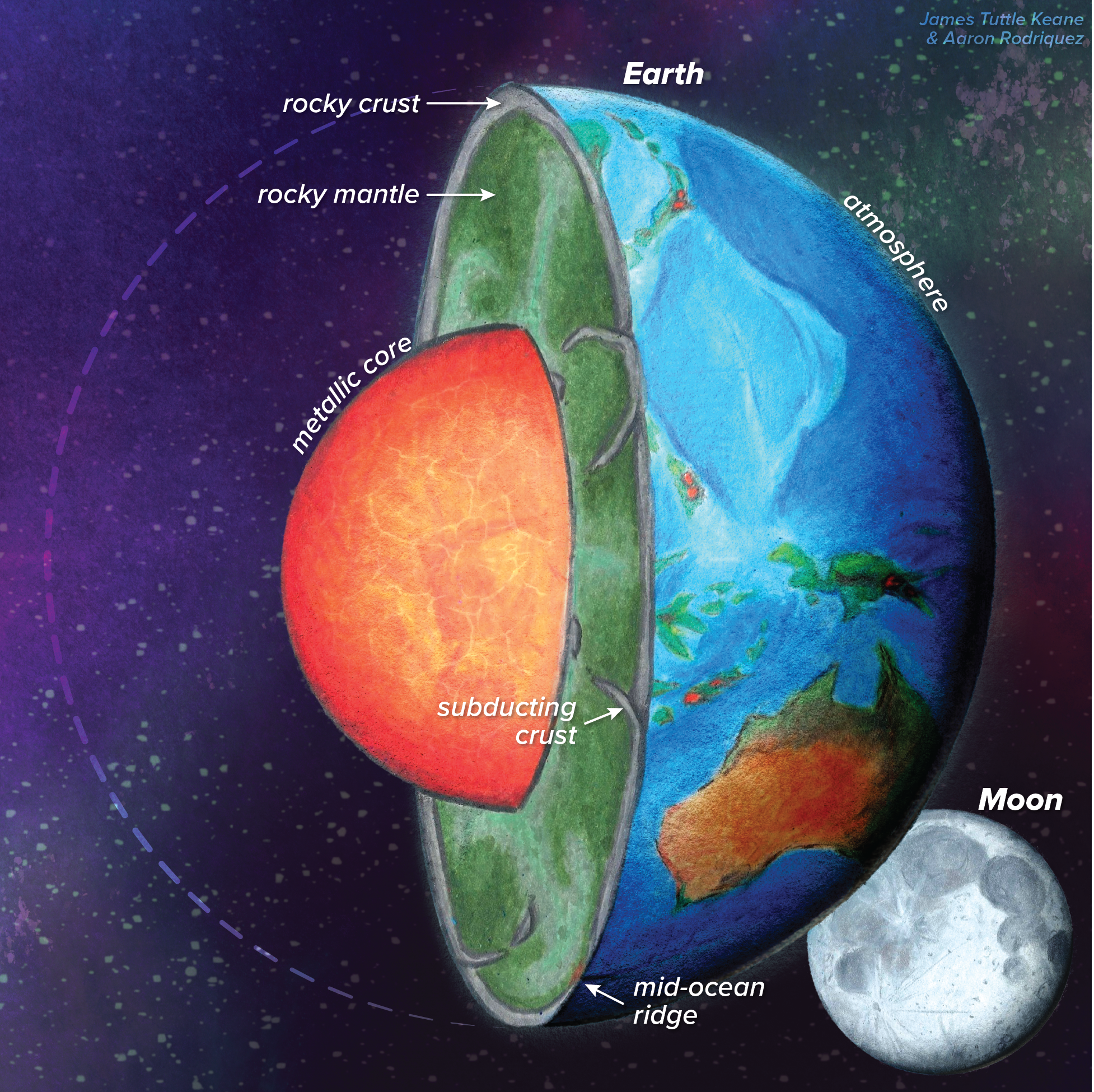Earth & The Moon
Surface of Liquid Water
Did you know that Earth is the only planet in the solar system with significant amounts of liquid water on its surface? In fact, our planet's oceans cover about 71% of its surface! The presence of liquid surface water has been critical for the development and sustainability of life on Earth. As we continue to explore the solar system and search for other habitable planets, the abundance of liquid water remains a key factor in determining a planet's potential to support life.
The One and Only Moon
Earth is the only planet in our solar system with only one moon. While there are larger moons in the solar system, the Earth’s moon has the largest size relative to its host planet. Just over ¼ the size of Earth, it is the closest celestial object to Earth.
Taking up the Mantle
Earth’s interior plays a key role in keeping it habitable. The magnetic field generated by the molten iron core shields the Earth’s atmosphere from solar wind. Carbon monoxide in the atmosphere ends up in rocks, shells, and decaying organic material which collects at the ocean floor. Plate tectonics moves this material from the crust to the mantle, helping to regulate Earth’s climate.
University of Arizona Legacy
The founder of the Lunar and Planetary Laboratory, Gerard P. Kuiper, mapped the Moon by telescope in the early 1960s. His maps were essential when NASA sent the first missions to the Moon. Even today, many scientists at LPL study the Moon. As a Ph.D. student, LPL alumnus William Hartmann invented a system for crater counting that correctly predicted the age of the lunar lava plains in advance of the Apollo landings. He was the first to publish the theory that the Moon formed in the early solar system from a giant impact. Subsequent models showed that this impacting object would have had to have been about the size of Mars!
QUICK FACTS
| EARTH | MOON | |
| MASS: | 6.0x1024 kg | 7.3x1022 kg |
| DIAMETER: | 12,742 km | 3,475 km |
| SURFACE GRAVITY: | 9.8 m/s2 | 1.62 m/s2 |
| AVG. SURFACE TEMPERATURE: | 59° F or 15° C | 26° F or -3° C |
| AVG. DISTANCE TO SUN: | 1.5x108 km or 1 au | 1.5x108 km or 1 au |


